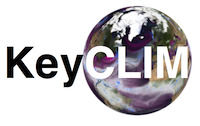This study presents a multiparameter analysis of aerosol trends over the last 2 decades at regional and global scales. Regional time series have been computed for a set of nine optical, chemical-composition and mass aerosol properties by using the observations from several ground-based networks. From these regional time series the aerosol trends have been derived for the different regions of the world. Most of the properties related to aerosol loading exhibit negative trends, both at the surface and in the total atmospheric column. Significant decreases in aerosol optical depth (AOD) are found in Europe, North America, South America, North Africa and Asia, ranging from −1.2 % yr−1 to −3.1 % yr−1. An error and representativity analysis of the spatially and temporally limited observational data has been performed using model data subsets in order to investigate how much the observed trends represent the actual trends happening in the regions over the full study period from 2000 to 2014. This analysis reveals that significant uncertainty is associated with some of the regional trends due to time and space sampling deficiencies. The set of observed regional trends has then been used for the evaluation of 10 models (6 AeroCom phase III models and 4 CMIP6 models) and the CAMS reanalysis dataset and of their skills in reproducing the aerosol trends. Model performance is found to vary depending on the parameters and the regions of the world. The models tend to capture trends in AOD, the column Ångström exponent, sulfate and particulate matter well (except in North Africa), but they show larger discrepancies for coarse-mode AOD. The rather good agreement of the trends, across different aerosol parameters between models and observations, when co-locating them in time and space, implies that global model trends, including those in poorly monitored regions, are likely correct. The models can help to provide a global picture of the aerosol trends by filling the gaps in regions not covered by observations. The calculation of aerosol trends at a global scale reveals a different picture from that depicted by solely relying on ground-based observations. Using a model with complete diagnostics (NorESM2), we find a global increase in AOD of about 0.2 % yr−1 between 2000 and 2014, primarily caused by an increase in the loads of organic aerosols, sulfate and black carbon.




